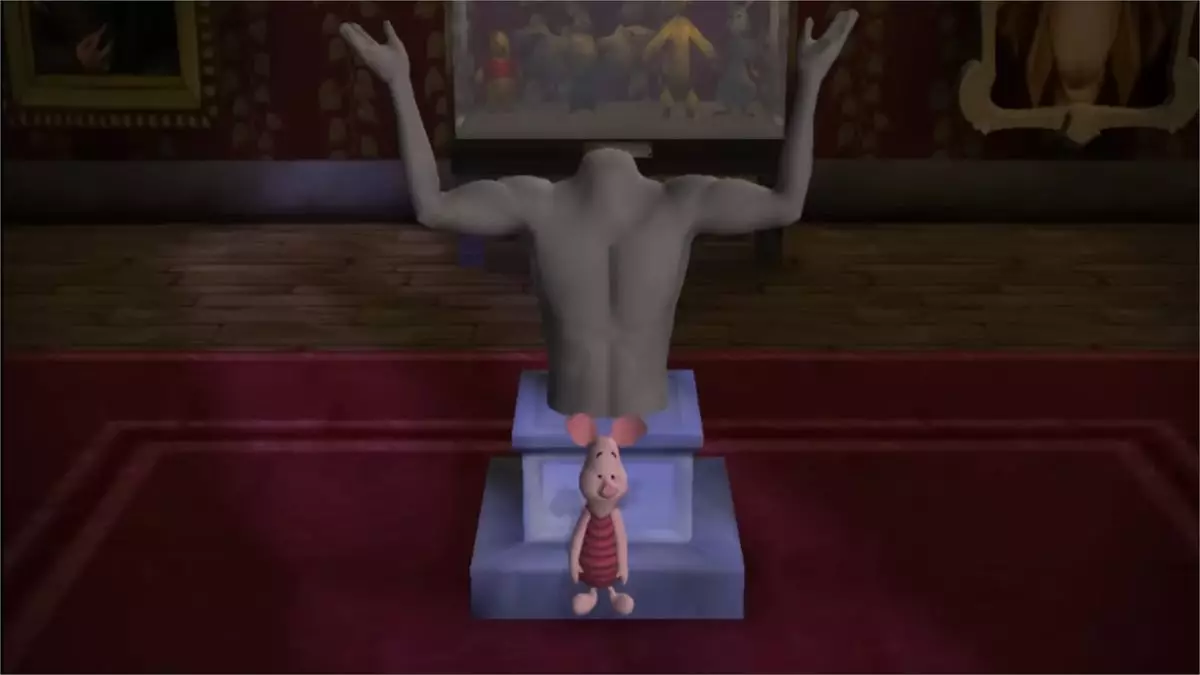In the vast landscape of video games, certain titles emerge from obscurity to achieve viral acclaim, often for the most unexpected reasons. Currently, that title appears to be Piglet’s Big Game, a whimsical adventure that puts the beloved character from A.A. Milne’s tales into a world resembling the dark ambiance of Resident Evil and Silent Hill. The juxtaposition of a childhood favorite in a genre typically reserved for mature audiences has captivated social media, leading to discussions that extend far beyond its initial scope.
Game director Pascal Stradella has provided intriguing insights into the ideation and development of Piglet’s Big Game, emphasizing that it is inherently a horror-comedy targeted towards children. Rather than relying on conventional scare tactics, the objective was to foster a sense of unease. Stradella’s perspective is refreshingly candid; the intention isn’t to terrify young players but to introduce them to mild frights that promote resilience. He speaks about crafting the experience to balance anxiety-inducing sound design with whimsical, light-hearted moments, ensuring that children feel safe yet challenged.
Innovation in Gameplay Mechanics
The gameplay introduces a unique twist on traditional health management systems. In Piglet’s Big Game, players navigate through different emotional states: starting from a ‘Normal’ state to a ‘Worried’ state, culminating in a ‘Panic’ state. This creative approach diverges from standard health bars commonly found in video games, making the emotional journey a core component of the gameplay. Players are incentivized to seek out “life fountains” or checkpoints, emphasizing the importance of environment and exploration in restoring emotional stability. This design choice cultivates an immersive atmosphere where players not only engage with the narrative but also instill empathy for the character’s fragile state.
The game’s unexpected rise in popularity illustrates the power of nostalgia intertwined with innovative gameplay mechanics. As the gaming community rallies around Piglet’s Big Game, collectors and enthusiasts have begun to pay inflated prices for copies, demonstrating a compelling blend of nostalgia and novelty. The modern iteration of Piglet imbues the character with new depth, allowing a new generation to experience this classic figure through a lens that encourages exploration of both fear and laughter.
What was once a largely forgotten property has transformed into a cultural phenomenon, drawing attention not just for its novelty but for its thoughtful approach to emotional development in gameplay. The willingness of Doki Denki to experiment with genres and target audiences places Piglet’s Big Game at the forefront of a potential movement in children’s gaming. Rather than merely catering to the youngest audiences with simplistic and straightforward narratives, this game invites players to confront and embrace their fears, weaving a rich tapestry of emotion and adventure that resonates with audiences of all ages. The blending of disparate genres signals a promising horizon for future titles that seek to break boundaries while maintaining the essence of beloved characters.


Leave a Reply